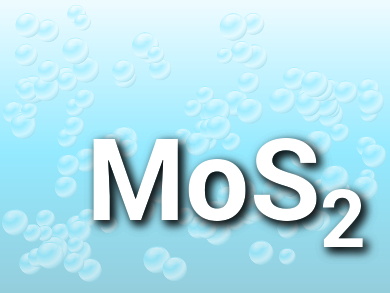Hydrogen is a promising environmentally friendly energy carrier. The production of H2 by water splitting could help to meet future demand, but needs efficient electrocatalysts which lower the overpotential of the hydrogen evolution reaction (HER). One abundant material for this application is molybdenum disulfide, MoS2. However, a lack of active sites within MoS2 crystals can lead to high overpotentials in alkaline solutions and limits the activity for HER.
Xinliang Feng, Technical University Dresden, Germany, and colleagues have developed nickel-doped MoS2 nanosheets to improve the number of active sites for water dissociation and thus, the catalytic activity. The team prepared the doped nanosheets by a hydrothermal reaction involving nickel sulfate, sodium molybdate, and L-cysteine. The nickel content could be tuned from around 6 mol% to 19 mol%.
The researchers tested the material’s activity as an electrocatalyst for hydrogen evolution and found a low HER overpotential of 98 mV at 10 mA/cm2 in KOH solution for a catalyst with a nickel content of 13.3 mol%. This performance is significantly better than for pure MoS2 catalysts. The nanosheets also have a good cycling stability, with the overpotential increasing by only 5 mV after 2000 cycles. According to the team, this approach could lead to efficient and robust water-splitting catalysts.
- Engineering Water Dissociation Sites in MoS2 Nanosheets for Accelerated Electrocatalytic Hydrogen Production,
Jian Zhang, Tao Wang, Pan Liu, Shaohua Liu, Renhao Dong, Xiaodong Zhuang, Mingwei Chrn, Xinliang Feng,
Energy Environ. Sci. 2016.
DOI: 10.1039/c6ee01786j



